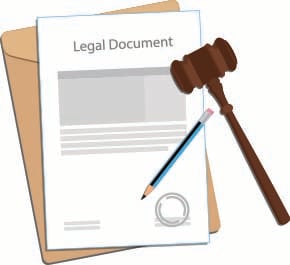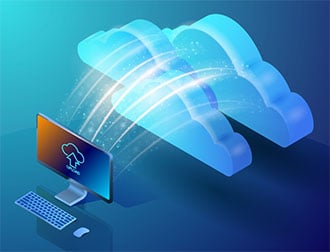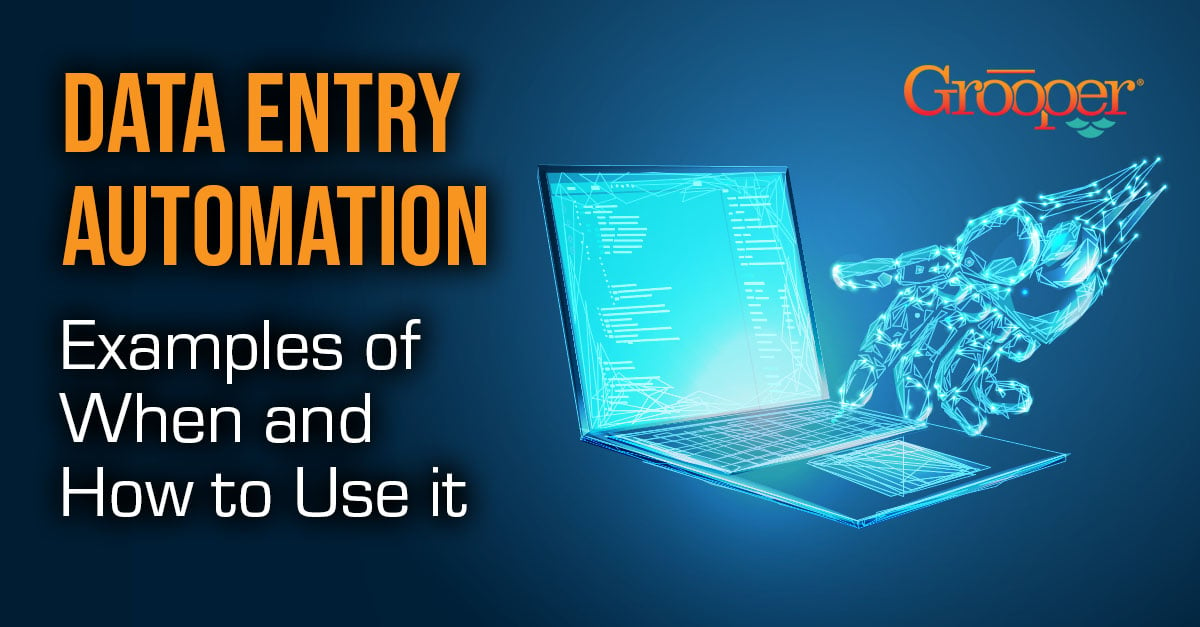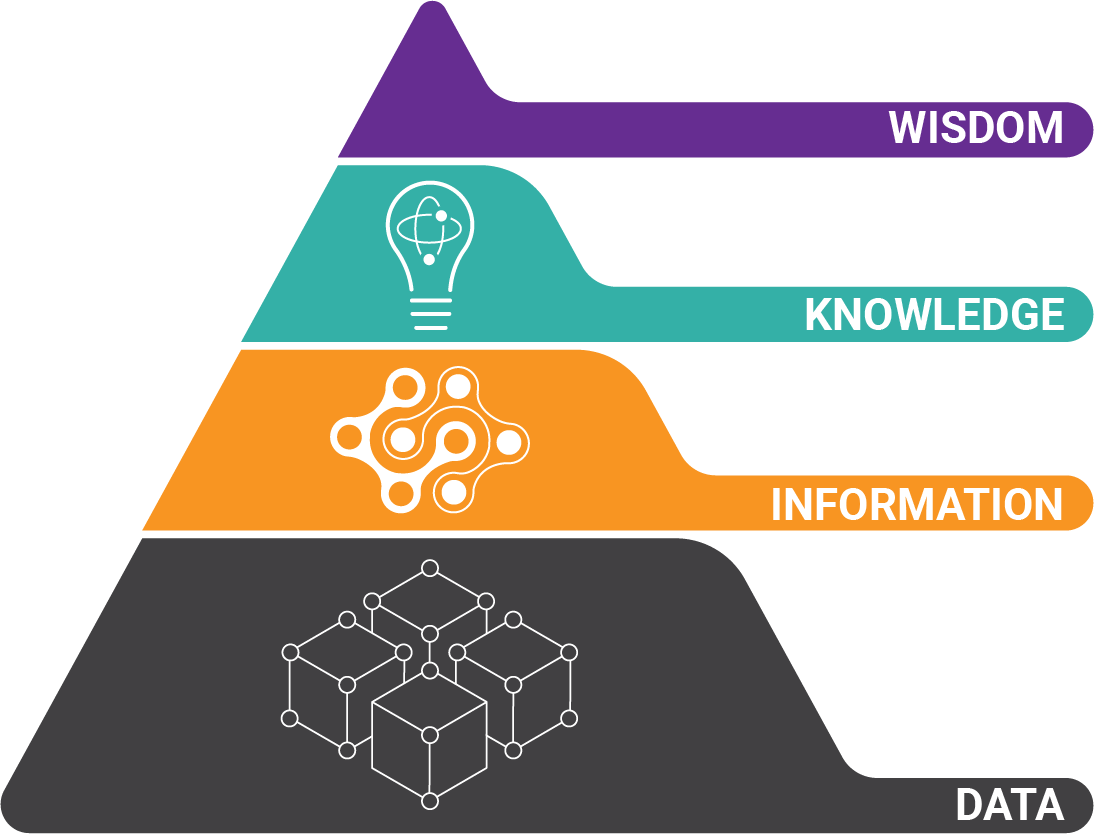Data entry automation fixes bad processes and provides a solution to bridge gaps between software systems.
While there are two popular approaches to automating data entry for enterprise content, manual offshore keying for data collection is not one of them.
This article will focus on the benefits of performing data entry with two intelligent process automation solutions:
- Robotic process automation (RPA)
- Intelligent document processing (IDP)
Table of Contents:
- 3 Examples of Data Entry Automation
- What is Data Entry Automation?
- The Data Entry Automation Process
- History of Data Entry
- Features of Data Entry Software
- Benefits of Data Entry Automation
- When to Use RPA for Data Entry Automation?
- When to Use Intelligent Document Processing Instead for Data Entry?
- Difference Between RPA and Intelligent Document Processing
What is Data Entry Automation?
Data entry automation are software-oriented solutions that vastly optimize data entry processes by replacing or decreasing manual tasks. This kind of software usually extracts data from images, electronic documents, PDFs, e-mails, paper documents or web pages and format the data in the format or structure of your choice (such as XML, CSV, JSON, CMIS, XSLT, etc.). They use technologies like OCR technology (optical character recognition) or ICR (intelligent character recognition) to simplify data ingestion processes.
While it may seem obvious that software would replace "stare-and-compare" work, it has not always been feasible from a cost perspective.
To understand why automation is such a hot topic now, we must first dive into the past and understand how we got here.

Say Goodbye to Manual Data Entry in
Invoice Processing.
Get Our "Cheat Sheet to Invoice Automation"!
There are so many invoice process automation solutions out there, but which is the best? Get this handy cheat sheet and learn:
- The 11 most important aspects to look for in a invoice automation software
- The most important questions to ask software vendors
- What's really important in experience, innovation and support for invoice data entry automation
The Data Entry Automation Process
The process of automating data entry generally involves 4 to 5 steps:
1) Uploading or Scanning Documents
First, enterprises receive raw, unstructured data in different forms like: documents, images, pre-scanned files, or even physical paper documents that haven't been scanned yet. When all files have been converted into digital format, these should be imported into the data entry automation software / platform.
Proper digital formats that are ready for automating include: PDF, JPG, PNG, and TIFF, among many others.
2) Document Pre-Processing
This next step involves documents / files being transformed into machine-readable formats. As we have mentioned before, several intelligent technologies are used in this step, like AI (artificial intelligence), ML (machine learning), and NLP (natural language processing).
But most importantly, image processing software is used in this step. The reason that it's so important is because it temporarily removes non-text objects (like hole punches, splotches, logos, pictures, etc.) from images.
This step improves the following step (OCR / text recognition), as it makes OCR much more effective and accurate. OCR wants to read documents, but it can be easily confused by non-text elements. So removing those elements makes OCR much easier and less confusing for automation software.
That directly translates to many hours of less data entry work that you have to do if your automation system made many errors in the OCR step.
3) Data Recognition and Extraction / OCR
Every data entry automation solution is different, but generally speaking, data entry automation software only recognizes and extracts the text that the user has specified.
Data extraction algorithms can be trained to be more accurate by users to identify certain text fields and data points as needed. Data extraction can be a very error-prone step for automation software, so many different OCR software methods may need to be applied in order to accurately and efficiently extract data.
And the deeper and more data that a user wants extracted means that more extraction methods will need to be leveraged.
4) Data Validation
This is an optional (but very important) step for those who want accurate data exported into their other line-of-business applications. Based on the solution, there are differing levels of human in the loop data validation tools.
Some validation tools can help train the system how to get more accurate data going forward. Validation rules can be created, and some solutions include built-in mathematical validation to cross-check numerical data. A good example is how invoice data can be validated using simple math, and an exception can be flagged for a human user to review at their availability.
5) Injecting the Extracted Data
Finally, the extracted and validated data can be sent to applications such as ERP systems, CMS platforms, or accounting applications.
The extracted / output data is called structured data, can be in varying formats (like CSV, XML, JSON, etc.), and can be easily imported into business applications for use in downstream workflows.
A Brief History on Data Entry
An enterprise running on a single software system would rarely need manual data entry outside of subject matter experts collecting and entering data into the system.
However, as software has evolved, the concept of a single platform being used by all business units has absolutely eroded. There are now point solutions for everything and no enterprise runs on a single behemoth system (an idea left behind in the '90s).
Add to the plethora of software solutions available today the practice of growth by acquisition and web-based content delivery. You then understand why getting all core systems "talking" with each other is a monumental task.
 For a long period of time it was simply cheaper to manually enter data from one source of information to another. And probably true that there was no alternative.
For a long period of time it was simply cheaper to manually enter data from one source of information to another. And probably true that there was no alternative.
Demand for data entry clerks reached an all-time high in the late '80s as platform-based enterprise resource and planning solutions began to take hold.
Data entry remained in demand until a steep decline in the early 2000's. By 2012, the allure for manual data entry all but disappeared thanks to increases in technology.
But not all manual data was eliminated! There was still the problem of documents and data feeds from externally-controlled systems.
Now, modern data entry automation technologies are removing the last of the tedious repetitive manual administrative tasks; finally making it cheaper to onshore all data entry with software.
Key Features of Data Entry Software
For the best data entry automation platforms, you should insist that your solution can leverage these invaluable technologies:
- Data Classification: Recognize and classify multiple forms of data and sources. Machine learning and natural language processing help identify documents based on many different approached (see those document classification approaches in action).
ML algorithms can greatly assist in classification by learning what makes one document type different from another. - Easy Data Integrations: Point-and-click data and integration with ERP software, CRM software, or automation tools like Clockify, Trello, Zapier and Workato to leverage many capabilities and optimize data entry.
- Data Validation and Management: Add new tasks through validation rules, assign them to certain team members and alerts will notify when extracted data needs a manual review.
When data content is collected and synched in real time or matched against databases, any errors or mathematical discrepancies can be held to the side while the rest of document data extraction proceeds. - Customizable Interface Features: Dozens of features can be customized, like checkboxes, dates, labels and text through drag-and-drop interfaces.
- Project Tracking: Monitor all project updates, changes and tasks in real time from anywhere.
Interested in our Data Entry Automation Software?
What are the Benefits of Data Entry Automation?
1. Reduce Overall Costs
The traditional method of managing data and paper documents means paying for printers, expensive toners, filing cabinets, storage space, and employees to organize the files and key in the data into your business or content management system.
All of these operational and overhead costs can be greatly reduced with data entry software. You can also greatly cut the costs of manual data entry errors, which leads us to...
2. Eliminating Manual Data Entry Errors
Did you know that a Gartner study shows that a manual data entry error in financial processes results in an average of 25,000 of extra work at the cost of about $878,000 annually?
By automating manual data entry with software, accurate data is entered into ERP, business content management systems, or accounting systems. When a discrepancy or mathematical error is found by the software, those instances can be flagged for a human to review them.
3. Increased Accuracy Leads to Better Decisions
Data entry automation tools use AI and machine learning to extract accurate data and integrate it into business intelligence systems. With valid and complete information, and virtually no errors, leadership has more data to make important decisions.
4. Save Time
Incredibly efficient automation means employees save time not doing manual data entry. And large volumes of data entry (like invoices, receipts and files) can be handled in a few clicks. As a result, employees have the time to concentrate on work that is more valuable to the organization.
5. Increased Employee Satisfaction
Eliminating the vast majority of manual data entry also means eliminating bland, repetitive, painstaking work. Those employees can then be re-purposed to higher value work.
As a result, employee morale and satisfaction with their career and everyday tasks increases. Which leads to...
6. Improved Workflow Productivity
By leveraging intelligent data entry software, manual work and workflow complication can be greatly reduced. Workflow steps can be set up so only certain people have access to digital copies that concern them or their department.
As the drudgery of manual data entry work is drastically reduced, employees tend to be happier and more productive. Many resources (like hours, effort, and money) can then be allocated to other tasks that more directly improve the bottom line.
3 Examples of How Data Entry Automation Software is Saving Time Right Now:
1) Legal and Compliance
 Legal and compliance tasks are difficult to perform and have traditionally required expensive manual data parsing, review, redaction, and moving files.
Legal and compliance tasks are difficult to perform and have traditionally required expensive manual data parsing, review, redaction, and moving files.
In the case of a legal discovery request or new compliance initiative, an IDP solution will parse a vast content management system for certain data and either redact it or return all documents containing the needed information to an RPA bot.
The bot delivers documents into a workflow for further processing.
No manual searching, and no manual data manipulation.
2) Automating Invoice Data
 Or imagine an AP automation workflow that integrates invoice information into multiple systems.
Or imagine an AP automation workflow that integrates invoice information into multiple systems.
Because invoices arrive from thousands of vendors daily, RPA bots are great for moving documents from cloud- and local-based sources like email, fax, and file shares into IDP workflows.
IDP processes invoices to extract and validate invoice information. The invoice, along with relevant extracted metadata is delivered back to the RPA bot.
The bot will then take the invoice information and integrate it where it’s needed for approvals and fast payment.
Full data entry automation.
3) Data Entry Automation at Banks and Credit Unions
 In the financial sector, customers demand real-time access to their data.
In the financial sector, customers demand real-time access to their data.
Institutions that process paperwork faster gain more customers and retain them.
Imagine a 400+ page loan packet that contains financial instruments and disclosures that exist in any number of formats or layouts.
An RPA bot sends these packets to the IDP solution for document classification and data extraction. All necessary data is labeled, extracted, and delivered to the bot for entry in loan origination and audit systems for near real-time processing.
Interested in our Data Entry Automation Software?
When Should You Use RPA for Data Entry Automation?
RPA is best suited for automating data entry when the source data is highly structured.
 Because RPA bots are designed to automate highly repetitive, time consuming, and tedious tasks, they work well with 100% predictable data.
Because RPA bots are designed to automate highly repetitive, time consuming, and tedious tasks, they work well with 100% predictable data.
Great examples include:
- Logging into websites to upload / download / enter information
- Moving data between databases / applications
- Working with any structured form or document that hasn’t been printed and scanned
The best way to think about RPA is that it is an unskilled robot that repeatedly performs a strict set of functions. You can imagine what would happen on a manufacturing assembly line if the parts on a conveyor belt get off by just a few inches. Everything would stop.
And no one can argue the efficiency of robots in manufacturing.
When Should You Use Intelligent Document Processing Instead for Data Entry?
IDP is a great automation tool for data entry from highly unstructured or semi-structured data sources. IDP is designed to “read” documents, understand their intent, and find specific pieces of information.
 The most widely accepted uses are with:
The most widely accepted uses are with:
- Invoices
- Mortgage / lease files
- 3rd party forms
- Digital transactional / B2B data
- Contracts
IDP eliminates human error on big document processing projects.
The best way to think about IDP is that it is a programmable set of technologies working in concert to discover and then extract information that isn’t in 100% predictable places or in a format that changes often.
IDP is well-suited for more complex knowledge work because it combines technologies like:
When to Combine RPA and IDP for Data Entry Automation
The very best approach to automating data entry is with a combination of these tools. Organizations using only either RPA or IDP will quickly move beyond the original use-case as their automation journey matures.
And it makes sense – most companies will start with either IDP or RPA, but rarely both.
Automation Software: What's the Difference Between Robotic Process Automation and Intelligent Document Processing?
Automation software using RPA starts with the low-hanging fruit of manual and repetitive data entry tasks. As automation maturity improves, more complex subject matter-intensive business process are replaced. This is where IDP comes into play.
 Think about data entry automation with IDP as an ingestion engine. It is a platform configured with a subject matter expert's (SME) knowledge on a case-by-case basis.
Think about data entry automation with IDP as an ingestion engine. It is a platform configured with a subject matter expert's (SME) knowledge on a case-by-case basis.
While RPA works out of the box on many different types of processes, IDP creates custom solutions for very specific use-cases.
For IDP to work on lease processing, for example, an SME is needed to configure the system to process the leases according to the organization's standardized workflows and policies.
IDP delivers highly targeted data that would otherwise be impossible for bots to work with.
In fact, research firm Gartner, Inc. says that:
Organizations starting their data entry automation journey with IDP will quickly realize the value in delivering structured data from unstructured sources into bot workflows.
Transforming Data Processes Isn't So Hard
With all the above use cases, data validations and human-in-the-loop workflows guarantee data accuracy. There is power in connecting these enterprise systems together.
You can see how converging multiple technologies like RPA and IDP revolutionizes data entry automation.
There are truly very few manual business processes that cannot be automated with extremely high accuracy and with no human error.
About the Author: Brad Blood
Senior Marketing Specialist at BIS






